
Do you have a question about the Pontiac 2007 G5 and is the answer not in the manual?
| Brand | Pontiac |
|---|---|
| Model | 2007 G5 |
| Category | Automobile |
| Language | English |
Information on manual and adjustable seats, headrests, and easy entry features.
Details on folding rear seats and cargo space.
Explains proper use, types, and safety precautions for seat belts.
Guidance on selecting and using child safety seats and booster seats.
Describes airbag types, deployment, and safety precautions.
Instructions on inspecting seat belts and airbag system components.
Information on vehicle keys, remote entry systems, and keyless entry operation.
Details on manual and power door locks, security locks, and lockout protection.
Instructions for operating manual and power windows, including window lockout features.
Explains content theft-deterrent systems, arming, and disarming.
Covers new vehicle break-in, ignition positions, and starting procedures.
Information on manual and power rearview mirrors, including cleaning and adjustment.
Overview of OnStar services, features, and how to use the system.
Details on glove box, cupholders, console storage, and convenience nets.
Instructions on operating the sunroof and its sunshade.
Identification of key components on the instrument panel with their functions.
Operation and purpose of hazard warning flashers and other warning devices.
How to use the vehicle's horn.
How to adjust the steering wheel for driving comfort and access.
Operation of turn signals, headlamp controls, and flash-to-pass feature.
How to switch between high and low beam headlamps.
Using high-beam headlamps to signal a driver for passing.
Operation of windshield wipers, including intermittent and speed-sensitive modes.
How to operate the windshield washer system and precautions in freezing weather.
Setting, using, and safety precautions for cruise control.
Operation of exterior lamps, including automatic headlamp system.
How headlamps activate automatically with wipers.
Functionality and conditions for daytime running lamps operation.
Operation of fog lamps and related parking lamp behavior.
How to adjust the brightness of the instrument panel lighting.
Operation of the interior dome lamp.
Operation of interior lighting for entry and exit.
Operation of reading lamps located on the rearview mirror.
Explanation of the EPM system for battery optimization.
Feature designed to prevent battery drain from interior lamps.
Usage and precautions for connecting electrical equipment.
Operation and cleaning of the ashtray and cigarette lighter.
Operation of the climate control system for heating, cooling, and ventilation.
Modes and procedures for clearing fog or frost from windows.
Operation of the rear window defogger grid.
How to change airflow direction and open/close air outlets.
Location and replacement of the air filter for cabin air quality.
Explanation of various warning lights, gages, and indicators on the instrument panel.
Overview of the instrument cluster and its functions.
How to read speed and track mileage using the speedometer and odometer.
Information on using the tachometer to monitor engine speed.
Function of the safety belt reminder light and chime.
Function of the passenger safety belt reminder light.
Meaning of the airbag readiness light and what to do if it stays on.
How the passenger airbag status indicator shows airbag enablement.
What the charging system light indicates and checks.
Function of the up-shift light for optimal gear changes.
What the brake system warning light signifies and actions to take.
Meaning of the ABS warning light and its implications.
What the ETS warning light indicates and system operation.
Significance of the engine coolant temperature warning light.
What the check engine light signifies and potential causes.
Explanation of various warning and status messages displayed by the DIC.
How to customize vehicle features through the DIC.
General advice on safe driving practices and vehicle interaction.
Techniques and principles for anticipating hazards and avoiding accidents.
Dangers of alcohol impairment and its effects on driving ability.
Understanding the systems controlling vehicle movement: brakes, steering, accelerator.
Factors affecting stopping distance, reaction time, and braking techniques.
How the ABS system works to prevent skidding during braking.
Emergency braking techniques, with and without ABS.
How the ETS system limits wheel spin and its operation.
Electric power steering operation and potential issues.
Advice on safe cornering, speed adjustment, and steering control.
Evasive steering techniques for emergency situations.
How to recover the vehicle if wheels drop off the road.
Safe procedures and considerations for passing other vehicles.
What happens when control systems fail due to loss of tire friction.
Types of skids and how to avoid or recover from them.
Tips and precautions for safe night driving.
How wet conditions affect driving and precautions to take.
Understanding and avoiding hydroplaning.
Precautions and procedures for driving through water.
Dangers and precautions when driving through flowing water.
Tips for navigating city streets and managing traffic.
Advice on safe freeway driving, merging, lane changes, and speed.
Checklist and preparation tips for long-distance travel.
Recognizing and avoiding driver fatigue and highway hypnosis.
Specific driving considerations for hilly and mountainous terrain.
Tips and vehicle preparation for safe winter driving.
Procedures for freeing a stuck vehicle, including rocking method.
Detailed steps for the rocking technique to free a stuck vehicle.
How to properly load the vehicle, weight limits, and capacity labels.
Explanation of the tire and loading information label found on the vehicle.
General considerations and procedures for towing vehicles and trailers.
Information on towing disabled vehicles and recreational towing methods.
Types and considerations for towing a vehicle behind another.
Procedure for dinghy towing and battery precautions.
Warning about dolly towing due to ground clearance.
Restriction on towing trailers with a manual transaxle.
Safe trailering practices, equipment, and considerations for automatic transaxles.
Important points and legal considerations for towing trailers.
Determining safe trailer weight and tongue load.
Importance of correct hitch equipment and installation rules.
Proper attachment and use of safety chains.
Instructions for trailer brake installation and maintenance.
Experience and practices for driving safely with a trailer.
Recommended following distance when towing a trailer.
Increased distance needed for passing when towing a trailer.
Techniques for backing up a trailer safely.
How to make wider turns safely when trailering.
Importance of checking trailer turn signals when towing.
Precautions and procedures for driving on steep grades while trailering.
Safe procedures for parking a vehicle with a trailer on a hill.
Information about dealer service, genuine GM parts, and accessories.
How non-GM accessories can affect vehicle performance and safety.
Warning about chemicals contained in vehicles, known to cause cancer or birth defects.
Precautions and knowledge required for DIY vehicle maintenance.
How external additions can affect vehicle airflow and performance.
Recommendations for fuel type, octane, and additives for optimal performance.
Recommended octane ratings for different engines and potential issues with lower octane.
Minimum gasoline specifications and recommendations regarding MMT additives.
Information on fuel requirements for California emissions standards.
Information on fuel additives, oxygenates, and methanol precautions.
Advice on obtaining proper fuel when driving internationally.
Safe procedures for refueling the vehicle and fuel cap instructions.
Safety precautions for filling portable fuel containers.
General safety precautions and checks for components under the hood.
How to open the vehicle's hood.
Visual guide to the components located in the engine compartment.
How to check and add engine oil, including dipstick use.
Step-by-step guide for checking the engine oil level accurately.
Guidance on when and how much oil to add, with capacity information.
Recommendations for engine oil viscosity, grade, and API certification.
How the system monitors oil life and when to change oil.
Procedure for resetting the engine oil life system after an oil change.
Safe disposal and environmental considerations for used engine oil.
Location and inspection of the engine air cleaner/filter.
Recommended intervals for inspecting and replacing the air cleaner/filter.
Procedure for inspecting and cleaning the engine air cleaner/filter.
Information on automatic transaxle fluid level checks and changes.
Information on manual transaxle fluid level checks.
Explanation of the self-adjusting hydraulic clutch linkage.
Type of coolant, its properties, and basic system information.
Recommended coolant mixture and precautions against using improper fluids.
How to check coolant level and safety precautions for handling hot coolant.
Procedures for adding coolant and safety warnings.
Importance of proper installation and tightening of the pressure cap.
What the engine coolant temperature warning light indicates and actions to take.
Identification of key components in the cooling system.
Recommendations for windshield washer fluid type and use.
Procedures for adding washer fluid and precautions.
Information on brake fluid level and reservoir.
Reasons for brake fluid level changes and cautions about overfilling.
How to identify brake pad wear and related noises.
Signs of brake trouble related to pedal travel.
How brakes adjust for wear and drum brake adjustment.
Importance of using genuine GM replacement parts for the braking system.
Information on the maintenance-free battery and replacement.
How to store the vehicle to prevent battery drain.
Safe procedures and precautions for jump starting a vehicle.
How to adjust headlamp aim and vehicle preparation for the task.
Information on proper replacement bulbs and safety precautions for halogen bulbs.
Procedures for replacing bulbs in these exterior lighting components.
Procedure for replacing the CHMSL bulb.
Procedure for replacing taillamp or turn signal bulbs in coupe models.
Procedure for replacing bulbs in sedan exterior lamps.
Procedure for replacing back-up lamp bulbs in coupe models.
Procedure for replacing license plate lamp bulbs.
Table listing exterior lamp bulb numbers.
How to inspect and replace windshield wiper blades.
Information on tire maintenance, safety, and selection.
Explanation of information found on tire sidewalls.
Definitions of terms related to tires and their components.
Importance of proper tire inflation and how to check it.
Guidelines for inspecting tire wear and performing tire rotation.
Indicators and conditions that signal the need for new tires.
Recommendations for selecting replacement tires with GM TPC specifications.
Effects of using different tire and wheel sizes on vehicle performance.
Explanation of UTQG ratings for treadwear, traction, and temperature.
Importance of proper alignment and balance for tire life and performance.
Guidelines for replacing wheels, bolts, and nuts, and safety precautions.
Precautions regarding tire chain use and potential vehicle damage.
What to expect and do during a tire blowout or flat tire.
Step-by-step instructions and safety precautions for changing a flat tire.
How to access and remove the spare tire and associated tools.
Proper storage of tires and tools to prevent injury.
General advice and techniques for cleaning the vehicle's interior.
Methods for cleaning upholstery, carpets, and plastic surfaces.
Techniques for cleaning fabric and carpet stains and soils.
How to clean and care for interior plastic surfaces.
Proper cleaning methods for safety belts to maintain their effectiveness.
Maintenance of weatherstrips for sealing and longevity.
Best practices for washing the vehicle to preserve its finish.
How to clean exterior lamps and lenses.
Recommendations for waxing and polishing the vehicle's paint finish.
Cleaning and maintenance of windshield and wiper blades.
Care and cleaning instructions for aluminum and chrome wheels.
Importance of proper repair and anti-corrosion treatment for sheet metal damage.
Repairing chips, fractures, and scratches to the paint finish.
Cleaning the underbody to prevent corrosion from road chemicals.
Causes and warranty coverage for chemical fallout damage to paint.
Table of appearance care products and their usage.
Location and importance of the Vehicle Identification Number (VIN).
Legal identifier for the vehicle, found on the instrument panel.
How the VIN code helps identify engine specifications.
Location and information contained on the service parts label.
Overview of the vehicle's electrical system and add-on equipment.
Precautions and potential effects of adding electrical accessories.
How headlamp wiring is protected by fuses.
Protection of the windshield wiper motor by fuses and circuit breakers.
How fuses protect power windows and other options.
Explanation of circuit protection devices and how to identify blown fuses.
Location and access to the floor console fuse block.
Location and access to the engine compartment fuse block.
Introduction to the maintenance schedule and its importance.
Importance of following intervals, checks, and using specified parts for good condition.
How proper maintenance benefits vehicle condition and the environment.
Guidance on how to use the schedule based on driving habits.
When the CHANGE OIL SOON message appears and required services.
Services to be performed at specific mileage or time intervals.
Detailed explanations and instructions for various maintenance items.
Owner responsibilities for checks and services to ensure safety and performance.
Underhood checks to perform at each fuel fill, including oil and coolant levels.
Monthly checks including tire inflation and wear inspection.
Annual checks, including starter switch and shift lock control system checks.
How to check if the starter switch operates correctly in all gears.
Inspecting the shift lock system for proper function.
Checking if the ignition key locks properly in each shift lever position.
Checking the parking brake and park mechanism holding ability.
Table listing recommended fluids and lubricants by name, part number, or specification.
List of common replacement parts with GM and ACDelco part numbers.
Diagram showing the routing of the engine drive belt.
Template for recording scheduled maintenance services performed.
Overview of customer assistance resources and satisfaction procedures.
Steps to resolve concerns with dealerships and Pontiac Customer Assistance.
Resource for GM ownership needs, vehicle info, and service reminders.
Contact information for TTY users needing assistance.
Contact details for customer assistance via phone or mail.
Program for reimbursing costs of eligible aftermarket adaptive equipment.
Details of the automatic roadside assistance program and covered services.
Options for transportation assistance during warranty repairs.
How to schedule service appointments and minimize inconvenience.
Information on vehicle computer systems and data recording, including EDRs.
Recommendations for collision repair using proper parts and qualified technicians.
How to report vehicle safety defects to government agencies and General Motors.
Contact information for reporting safety defects to NHTSA.
Contact information for reporting safety defects to Transport Canada.
How to notify General Motors about vehicle safety defects.
How to obtain service manuals and other technical publications.

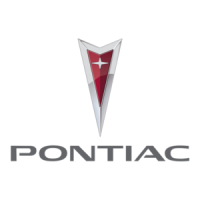
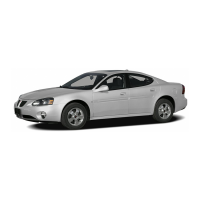
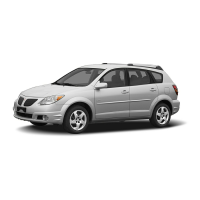
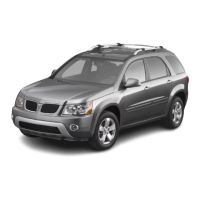
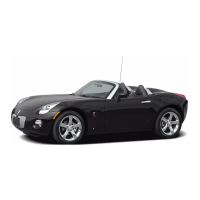
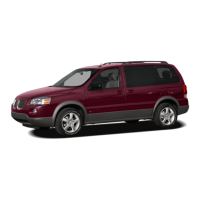
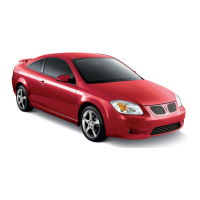
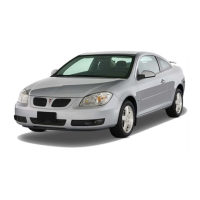
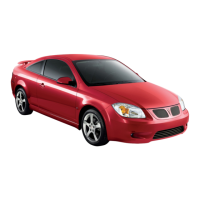

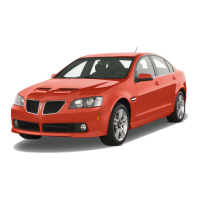
